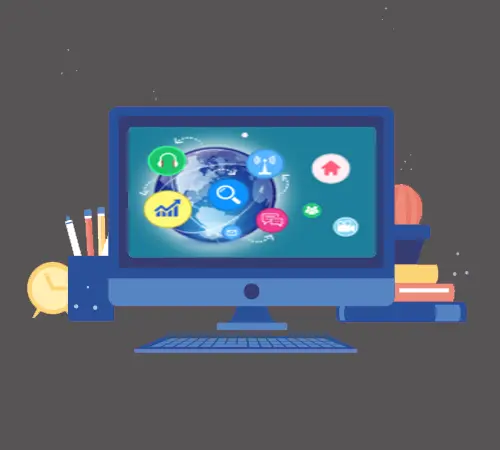Rich Internet Application Development

A rich Internet application (RIA) is a Web application that has many of the characteristics of desktop application software, typically delivered by way of a site-specific browser, a browser plug-in, an independent sandbox, extensive use of JavaScript, or a virtual machine. Adobe Flash, JavaFX, and Microsoft Silverlight are currently the three most common platforms. Google trends shows that plugins-based frameworks are in the process of being replaced by HTML5/JavaScript based alternatives.
Users generally need to install a software framework using the computer’s operating system before launching the application, which typically downloads, updates, verifies and executes the RIA. This is the main differentiator from HTML5/JavaScript based alternatives like Ajax that use built-in browser functionality to implement comparable interfaces. As can be seen on the List of rich Internet application frameworks which includes even server-side frameworks, while some consider such interfaces to be RIAs, some consider them competitors to RIAs; and others, including Gartner, treat them as similar but separate technologies.
RIA Development Tools
JavaFX
JavaFX is a software platform for creating and delivering rich Internet applications (RIAs) that can run across a wide variety of connected devices. The current release (JavaFX 2.2, August 2012) enables building applications for desktop, browser and mobile phones. TV set-top boxes, gaming consoles, Blu-ray players and other platforms are planned. Java FX runs as plug-in Java Applet or via Web Start.
HTML5/JavaScript
Google Web Toolkit is an open source set of tools that allows web developers to create and maintain complex JavaScript front-end applications in Java. Other than a few native libraries, everything is Java source that can be built on any supported platform with the included GWT Ant build files.
Adobe Flash
Adobe Flash manipulates vector and raster graphics to provide animation of text, drawings, and still images. It supports bidirectional streaming of audio and video, and it can capture user input via mouse, keyboard, microphone, and camera. Flash contains an object-oriented language called ActionScript and supports automation via the JavaScript Flash language (JSFL). Flash content may be displayed on various computer systems and devices, using Adobe Flash Player, which is available free of charge for common web browsers, some mobile phones and a few other electronic devices (using Flash Lite).
Frequently Asked Questions
1. What is a rich internet application with an example?
A Rich Internet Application (RIA) is a web application designed to function like a desktop application. Before the emergence of RIAs, most web applications were made up of static pages. An example of an RIA is Sumo Paint, a Flash-based application that operates similarly to graphics editing software like Photoshop.
2. What are the characteristics of rich Internet application?
Rich Internet Applications (RIAs) are web applications that allow data processing on both the server and the client sides. They facilitate asynchronous data exchange, ensuring that the client remains responsive while continuously updating or recalculating parts of the user interface.
3. What are the advantages of rich Internet application?
• Highly Responsive:
Reduces the need to reload pages, ensuring smooth functionality across all devices.
• Capable Synchronization: Custom synchronization
of master items saves revenue.
• UX Rich Features: Access superior
functionalities, such as drag-and-drop, and other desktop application features.
• Seamless Integration: Effortlessly integrate
with multiple modules and systems, including quality control and material
management.
• Targeted Focus: Visualize and customize products
according to user needs and company requirements.
• Agile Methodology: Develop software projects in
incremental cycles using methodologies like Scrum for feature-rich development.
4. What is the accessible rich Internet application used for?
WAI-ARIA, which stands for the Accessible Rich Internet Applications Suite, provides guidelines to enhance the accessibility of web content and applications for individuals with disabilities. It is particularly beneficial for dynamic content and sophisticated user interface controls created with HTML, JavaScript, and similar technologies.
5. What is the difference between rich Internet application and traditional web application?
Rich Internet Applications (RIAs), built with powerful development tools, offer a faster and more engaging user experience. Unlike traditional browser applications that rely solely on HTML and HTTP, RIAs provide enhanced visual appeal and greater interactivity. In contrast, early Internet users primarily exchanged text-based electronic mail messages.